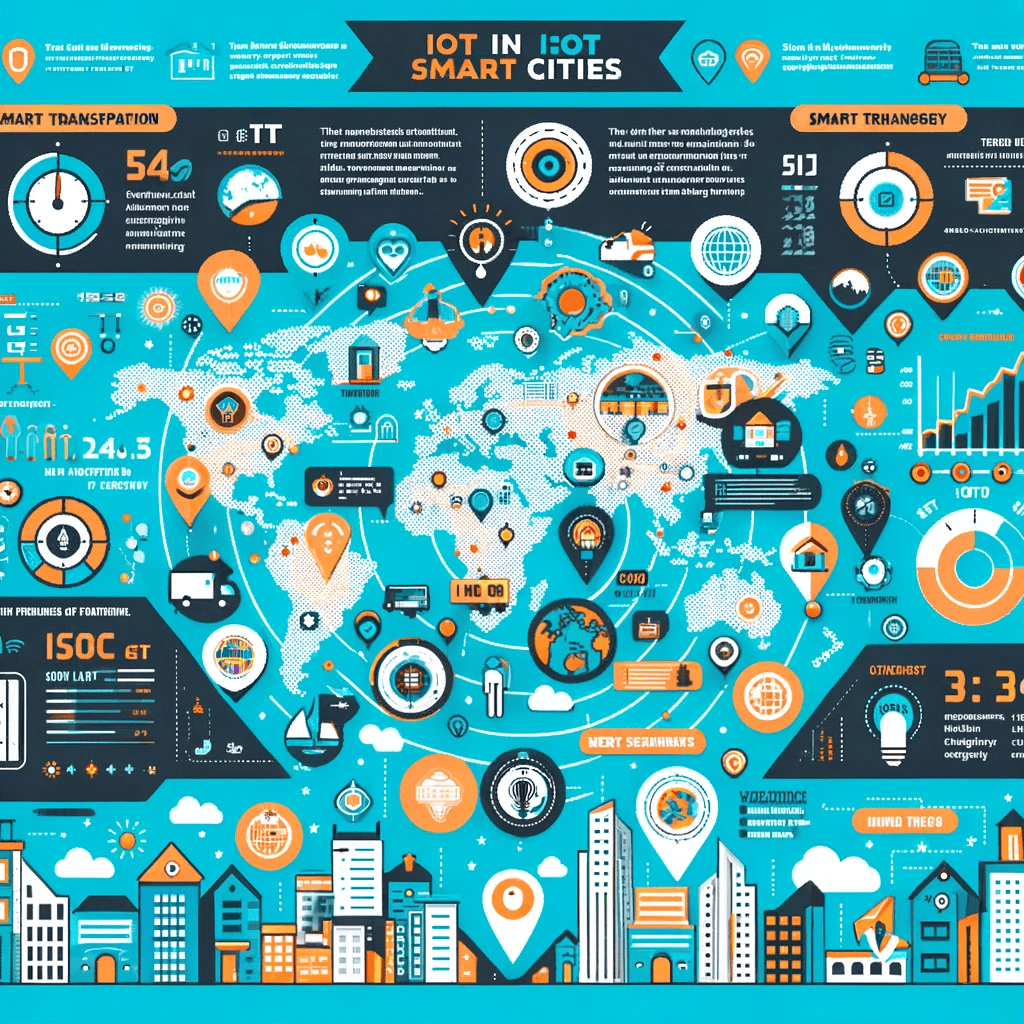As this month of November comes to an end, we can sum up the news of the last few weeks that happened. The concept of smart cities has evolved significantly over the years, becoming a pivotal aspect of urban development. In this context, digital transformation, IoT (Internet of Things), and AI (Artificial Intelligence) play crucial roles. These technologies are not just add-ons but are central to creating efficient, sustainable, and livable urban spaces.
The Rise of Smart Cities
What exactly makes a city “smart”? This question has guided urban planners and technologists alike. A smart city uses digital technology to enhance performance, wellbeing, and reduce costs and resource consumption across the city. The journey towards smart cities has been a gradual evolution, marked by milestones in technology and urban planning. To understand this journey, consider the insights from our previous Editor’s Piece on the Evolution of Smart Cities, which highlights the convergence of technology and urban development.
Digital Transformation: Reshaping Cities
Urban spaces are undergoing a radical transformation thanks to digital technology. This transformation is about integrating digital processes into every fiber of urban life, from administration to public services and beyond. A prime example of this is seen in our article on Data Mining and Digital Transformation, illustrating how data analytics is revolutionizing city management.
IoT and AI: Core Pillars of Smart Cities
In the realm of smart cities, IoT and AI stand out as foundational technologies. IoT’s network of sensors and devices provides a wealth of data that AI algorithms analyze to optimize city operations. For instance, smart meters, an IoT innovation, are revolutionizing utility management as detailed in our feature on Smart Meters: The Most Important Thing in the Internet of Things.
Sustainable Urban Development
Sustainability is at the heart of the smart city ethos. It’s about creating urban spaces that not only leverage technology but also ensure environmental stewardship. Our exploration of Creating Eco-Friendly Smart Cities with Green IoT Technology showcases how technology is being used to forge greener, more sustainable urban futures.
Overcoming Urban Challenges
Smart cities are not just about implementing new technologies; they are about solving real urban challenges. From traffic congestion to energy management, technology offers solutions. A case in point is our discussion on Tech and Green Energy, where technology’s role in addressing environmental challenges is examined.
Mobility and Connectivity in Urban Spaces
The way people move around cities is undergoing a transformation, largely fueled by advancements in technology. Smart city initiatives are reshaping mobility, making it more efficient and connected. A notable development in this area is the rise in micromobility, as detailed in our analysis of USA Micromobility Ridership. This trend reflects a broader shift towards more sustainable and agile urban transport options.
The Reality of Smart Urban Living
Smart urban living goes beyond technology; it’s about enhancing the quality of life for all city dwellers. This encompasses everything from improved urban infrastructure to smarter public services. The changes in urban foot traffic patterns, as discussed in our article on Foot Traffic in U.S. Cities, provide insights into how smart city initiatives are directly impacting daily life.
Policy and Technology: Governing the Future
The intersection of policy and technology is critical in shaping the future of smart cities. Policies play a vital role in governing the deployment and integration of new technologies within urban environments. An interesting perspective on this is offered in our piece on the UK Privacy Regulator’s Smart Device Warning, highlighting the need for careful consideration of privacy and security in the age of smart technology.
Data-Driven Decision Making in Urban Planning
Data is the lifeblood of smart city operations. It enables city administrators to make informed decisions and plan for the future. Our review of Data-Driven Tourism Attractions Assessment illustrates the power of data analytics in enhancing visitor experiences and urban planning.
The Future Landscape of Smart Cities
As we look to the future, the landscape of smart cities is poised for further evolution. New technologies continue to emerge, offering novel solutions to urban challenges. Our exploration into Smart City Waste Management and Air Quality Monitoring provides a glimpse into the future of urban environmental management.













